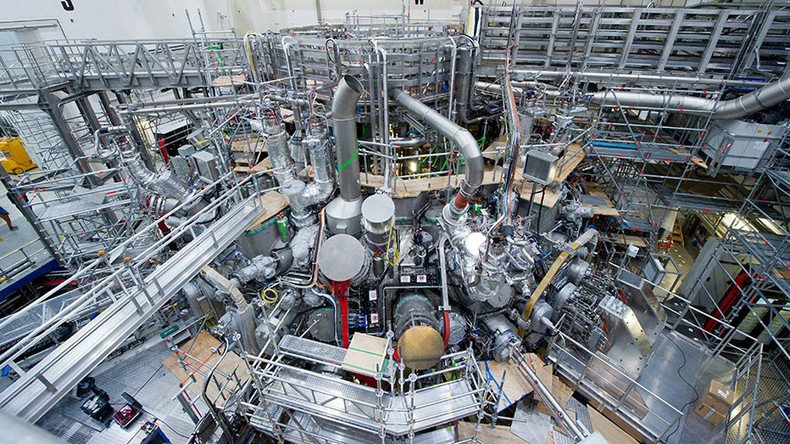80 million degrees: German fusion reactor fires up hydrogen mimicking sun conditions

The inauguration of the world’s biggest stellarator, a type of nuclear fusion reactor, took place at Marx Planck Institute in Germany as the Wendelstein 7-X heated hydrogen gas to 80 million degrees for a quarter of a second.
The ceremony was attended by German Chancellor Angela Merkel, who pressed the button to launch the reactor in Greifswald. The oddly-shaped 5.5m radius helical machine was completed in April last year and is an alternative design to the more popular tokamak nuclear fusion device.
And... first hydrogen plasma :) #wendelstein7x@PlasmaphysikIPP@maxplanckpresspic.twitter.com/gmrEAzAJbu
— Max Planck Society (@maxplanckpress) February 3, 2016
Both tokamak and stellarator are designed to confine plasma hot enough to start fusion of nuclei long enough for the reaction to produce more energy than used to start the reaction. The difference is that a tokamak uses current driven through the plasma to prevent it from dissipating. A stellarator uses a system of magnetic coils shaped in a way that compensates for the lack of uniformity in a ring-shaped reactor.
While a tokamak is generally considered more promising for creation of a commercial fusion power plant, the stellarator design has its advantages, such as allowing plasma containment over long periods of time. The inauguration pulse was relatively brief, but when the Wendelstein 7-X is fully operational it will contain plasma for some 30 minutes.
READ MORE: China wants to build hybrid fusion-fission reactor by 2030
The fusion reactor will help German scientists study the behavior of plasma. In December, researchers at Greifswald tried it with helium plasma and the reactor ran as expected, allowing the team to switch to hydrogen, which has different properties.
“This was really the beginning, and the machine works nicely. The confinement time was very large, we knew we were on the right path,” said Hans-Stephan Bosch, who directs the division responsible for the operation of the stellarator.
The experiments are to continue throughout March with the power of microwave pulses, which heat the hydrogen rising to 20 megawatts. In 2019, the scientists will switch to deuterium, a hydrogen isotope needed for fusion reaction to happen.












